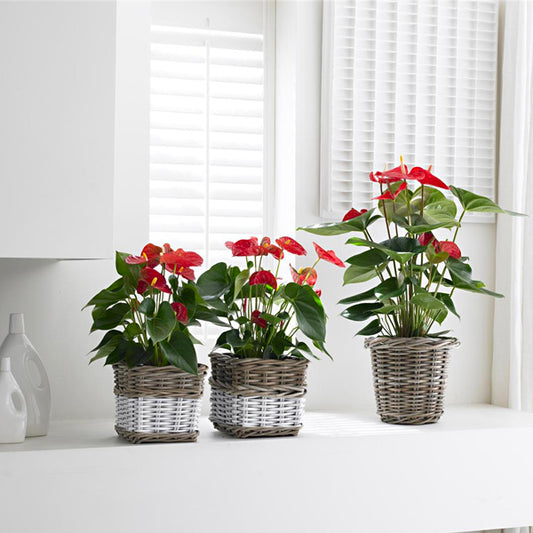If Dendrobiums are grown for their ease to grow and bloom and Cattleyas for their large flowers on compact plants, then Phalaenopsis or Moth Orchids as they are commonly called are grown for their floral longevity and perfectly arranged blooms. Phalaenopsis blooms can last for 2-3 months and if the plant is healthy, they can bloom off their old spikes a second time also.
Light
Phalaenopsis are low light orchids and can do well with indirect sunlight. A spot on your balcony which is well lit but where no direct sunlight reaches would be a perfect spot for it. They can be grown on a northern balcony or the northern side of the greenhouse where direct sunlight does not fall on them during most part of the year. Phalaenopsis with their wide leaves are well adapted to collect whatever little light is available.
Water
Being related to vanda orchids, they have no water storage organs and therefore need to be constantly moist at the roots. The root ball should never be allowed to go bone dry. At the same time ensure that the media is not overly damp with stagnant water. Phalaenopsis should preferably be kept hanging facing sideways so that no water collects in the crown (top part where new leaf arises) of the plant which can lead to rot if left so overnight. When watering Phalaenopsis, water them thoroughly rather than multiple incomplete watering.
Temperature
In their natural habitat, Phalaenopsis are found growing in low light conditions which automatically translates to lower temperatures. When temperatures rise above 30 degrees Celsius during the summer, it would be ideal to move them to a cooler location so that they do not dehydrate. They can, however, tolerate lower temperature to 10 degrees Celsius. Most big-flowered Phalaenopsis bloom once a year with a drop in daytime temperatures and an increase in the day-night differential. This can start in the when the rains start in some regions & can happen in autumn towards the end of the monsoons. The smaller flowered ones are known to bloom several times a year though their flowers do not last as long.
Humidity
Phalaenopsis love humidity and will grow to their full potential if provided humidity between 50-80%. During summer, low humidity coupled with high air movement can quickly dehydrate them. Such plants can take longer to recover and may only be able to be nursed back during the subsequent monsoon. Because of this, Phalaenopsis are not for those who are known to travel frequently as they need to be looked after on a regular basis.
Potting and fertilizer
Phalaenopsis like vandas have thick roots and therefore need coarse potting media. They grow best when grown in an angle in hanging teak wood baskets. Provided they are sheltered from the rain, We recommend using Kiwi Pine bark - big chips. Even if grown upright in ordinary pots, Phalaenopsis tend to migrate towards the rim of the pot and hang sideways. This is a natural mechanism to prevent crown rot. After they have completed their blooming cycle and no signs of secondary spikes are visible, revert to high nitrogen or balanced HighGrow fertilizer so that you have a strong plant for the subsequent season. You can opt to give them a high potassium HighBloom fertilizer starting about a few days before the monsoons.

